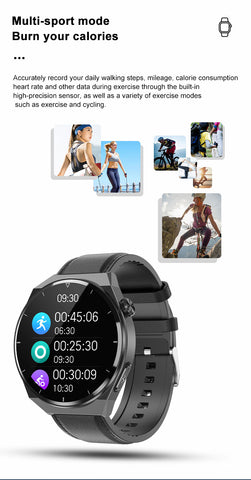How to Develop Rhythm in Running
The term "rhythm" is frequently heard in many sports competitions, whether it's in team sports or individual athletic events. Coaches often mention phrases like "lost the rhythm" or "rhythm is off." In running, phrases such as maintaining rhythm, increasing rhythm, and feeling the rhythm are commonly heard. This rhythm is extremely crucial. When you're in good shape, running feels exceptionally smooth, with the overall rhythm flowing effortlessly like a stream. Compared to regular training paces, it's faster and less tiring. Conversely, when running feels awkward, breathing and cadence become erratic and disordered, with pacing fluctuating between fast and slow, never finding a consistent rhythm. In competitive terms, such a state during a race undoubtedly leads to defeat. So, how do you develop a sense of rhythm in running? Generally, it starts with cadence and breathing.
Developing Cadence
To achieve a good sense of rhythm, the technical aspect should begin with cadence. Cadence naturally corresponds to arm swing, with the overall requirement being "light" and "fast," abandoning all distractions to wholeheartedly experience your own frequency. Running can be seen as shifting the support point from one leg to the other. Forward motion speed is generated during the transition between two support actions. The key factor determining the speed and efficiency of body movement lies entirely in the speed (cadence) at which you switch support points and the distance (stride length) between the two support points. Increasing cadence and controlling stride length has many benefits, such as reducing airborne time effectively, ensuring movements are more "forward" rather than "upward," stabilizing the center of gravity, reducing braking effects, and minimizing impact force, among others. So, how do you make high cadence feel natural?
-
Shift your body's center of gravity forward. Leaning forward shifts the action line of gravity in front of both legs, generating a forward force on the body and forcing you to swing your front leg forward faster and pull your rear leg back quickly, thereby driving the rhythm to some extent.
-
Avoid excessively extending your foot when landing. Otherwise, landing too far forward will cause a braking effect and won't utilize the forward force from the center of gravity leaning forward effectively.
-
Shorter ground contact time also contributes to maintaining rhythm secrets. If your "feet stick to the ground" too much, it will also cause a braking effect and disrupt the rhythm.
-
Learn to control rhythm using core strength, not just leg strength. Especially focus on using hip movement as the pivot point to actively drive leg movement.
It's important to note that high cadence and fast rhythm don't necessarily mean high pace. When speed changes during running, a stable rhythm and adjusting stride length are more efficient and comfortable than a method involving long strides and rhythmic fluctuations.
Developing Breathing Rhythm
Many runners often experience irregular breathing during running, panting and gasping for air after just a few steps. In hot and humid weather conditions, breathing difficulties during running become even more pronounced. To improve breathing, you first need to understand what breathing is. Breathing is mainly completed by the contraction and relaxation of respiratory muscles (the intercostal muscles and diaphragm). When the respiratory muscles contract, the front-to-back and left-to-right diameters of the chest cavity increase significantly, allowing for a noticeable increase in volume, known as lung expansion, and the inhalation of air into the lungs; during exhalation, the respiratory muscles and diaphragm relax, causing the front-to-back, left-to-right, and up-and-down diameters of the chest cavity to decrease, and air is exhaled.
Here's a tip: focus on exhalation rather than desperately inhaling while running. Because when the lungs are working, it's like a bellows; only when the last breath is exhaled more, reducing the residual air volume in the lungs, will the next breath be naturally drawn in. Also, because exhalation tends to be a relaxation process, exhaling a little more won't require extra effort, while during inhalation, the respiratory muscles are contracting. Just relying on desperately inhaling will only make you more tired.
So, is there a specific breathing frequency? Every three steps exhale and every three steps inhale? Or every two steps exhale and every two steps inhale? In fact, there are no specific rules. Breathing frequency entirely depends on your level of physical fitness and exercise intensity (pace), and it will automatically adapt to the running rhythm and intensity. The heart, lungs, and legs will adjust tacitly with running, allowing the body to run at a natural pace without deliberate effort; otherwise, it may lead to technical inconsistency and cause shortness of breath.
Rhythm needs to develop naturally
For rhythm, it's far more than just cadence and breathing frequency. More importantly, it's the body sensations corresponding to cadence, breathing, and pace, which are comprehensive body feedback, containing the body's current condition or athletic state. Everyone should be good at experiencing body sensations. Another way is to use tools. The BP Doctor smart watch can record changes in body data as well as running speed and distance, allowing you to better control the entire process.
There's one more important point that everyone should be aware of: a rhythm as smooth as flowing clouds must be supported by super strength, which means that technique must be guaranteed by ability, so don't get things backward. Running with a low pace but maintaining a good rhythm proves that being amateur doesn't equal being unprofessional, and running slowly doesn't necessarily prevent injuries. Solidly training basic skills such as aerobic and strength training, letting rhythm and movements develop naturally, is the way to go. The marathon is extremely practical, and in its face, impatience is not allowed. You need enough awe and patience to gain the ability to possess it, rather than blindly copying or blindly "challenging."










